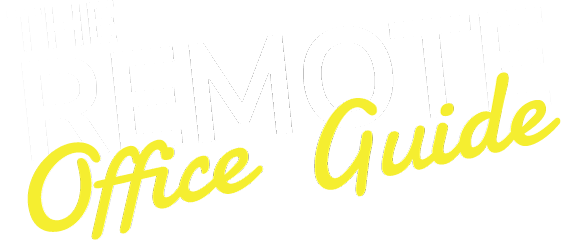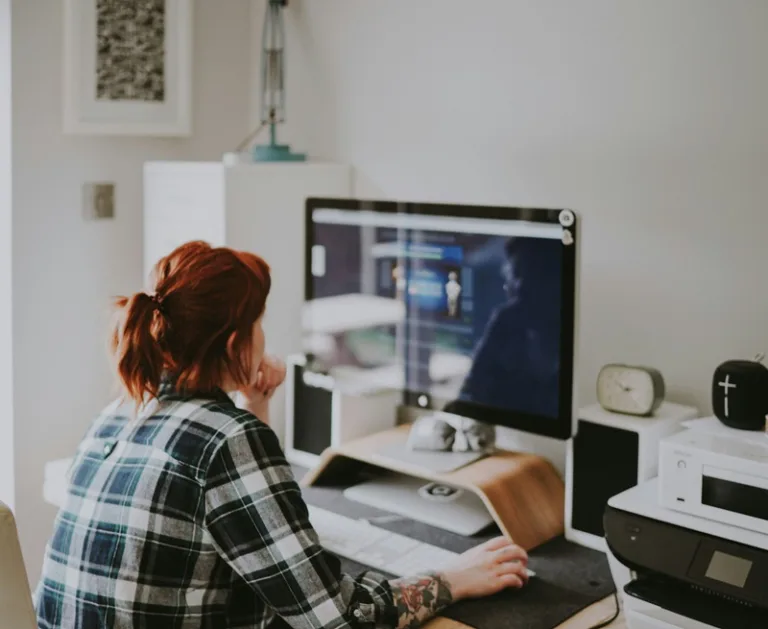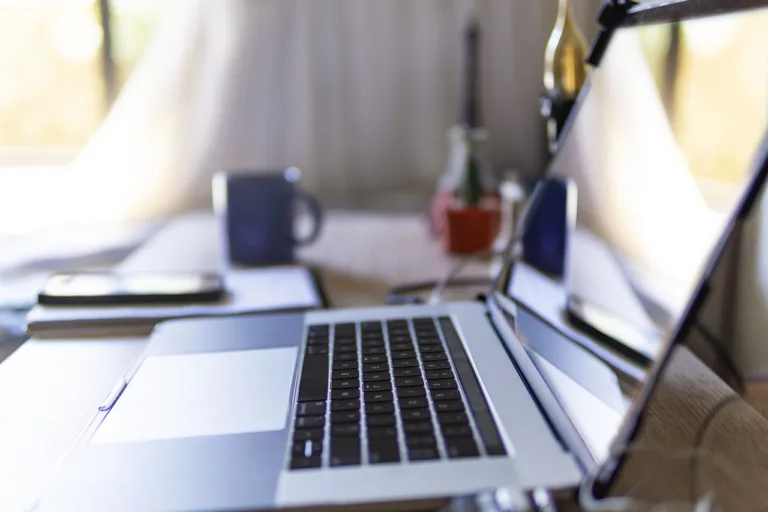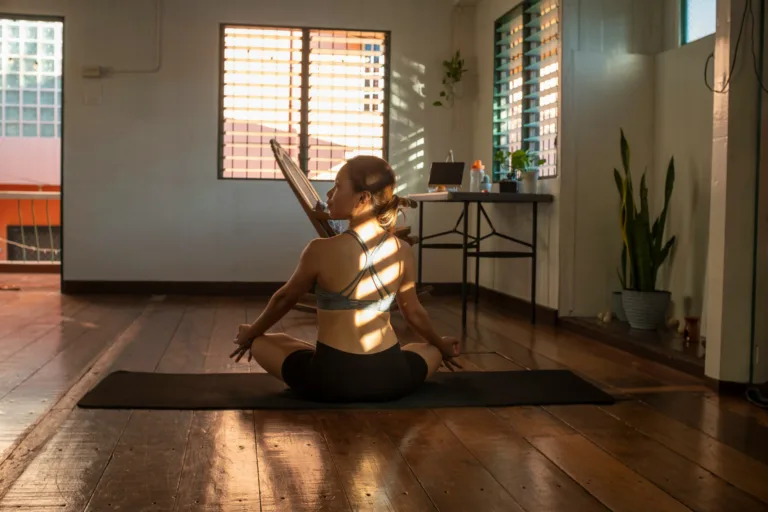Technological innovation has brought us plenty of benefits and conveniences. But it has also affected our health and is making us sedentary. According to the NHS, many adults in the UK spend around 9 hours a day sitting¹.
Office-based workers are one of the most sedentary populations, spending 73% of their workday and 66% of their waking day sitting². What is more, the move to more home-based and blended patterns of working post-COVID-19 pandemic can increase workforce sedentariness as commuting exercise is removed.
Why Should You Exercise at Your Desk?
Rapidly accumulating evidence has linked a greater amount of inactive time with being overweight and obese, type 2 diabetes, some types of cancer, and early death.
Research shows that illnesses associated with a sedentary lifestyle are linked to around 70,000 UK deaths each year and cost the NHS in excess of £0.7bn. Furthermore, these costs are probably a conservative estimate as sedentary behaviour may also be associated with other health problems not included in the study. These include musculoskeletal disorders such as neck, back, and shoulder pain, and mental health disorders including anxiety and depression³.
So, it’s very important to follow the World Health Organisation’s guidance and gain the health benefits of physical activity. This advises adults to engage in at least 150 to 300 minutes of moderate-intensity exercise each week or work out vigorously for at least 75 to 150 minutes per week⁴.
Yet, office workers often have busy schedules that demand all their time, leaving no slots to hit the gym after work or go for a run. Therefore, creative ways to incorporate exercise into the working day can help desk dwellers achieve regular physical activity.
Staying active throughout the day
Exercise does not need to be done in one slot. Incorporating physical activity throughout your working day can have similar health benefits. This is where ‘deskercise’ routines can play an important role in helping you to stay healthy and fit whilst working at your desk.
A standing desk not only reduces an office worker’s sedentary lifestyle but it lends itself to exercising even without exercise equipment. You can sneak in remote working exercises at your stand-up desk while checking emails, reading reports, or on a conference call.
Effective standing desk exercises can improve your energy, productivity, mood, stress levels, and general state of health. They are simple to do, can be done whilst you are working, and can easily become part of your daily desk routine. So, what are you waiting for? Follow our exercises to do standing at a desk which combines strength and stretching moves and join the growing number of deskercisers.
What Exercises Can I Do at a Standing Desk?
There is a multitude of exercises you can do at a standing desk, either in the standing position or sitting. In this article, we have put together some general standing desk exercises as well as some standing desk leg exercises, standing desk ab exercises, and standing desk stretching exercises to get you started. You can start off by doing just a few repetitions of these exercises and build up your routine as your fitness and strength improves.
Here are some general standing desk exercises to get you started.
Put Your Hands in the Air
A fun and motivating clapping exercise you can do whilst reading an email.
Start with your arms straight out to your sides and your hands at shoulder height. Lift them above your head and clap. As your hands come back to the starting position, squeeze your back muscles together by pinching your shoulder blades. You’ll feel a good burn through your upper back. Repeat 12 times and complete up to three sets.
March
A stationary march adds a bit of cardio exercise to your workout.
March on the spot. Lift your knees high. If you really want to step up your routine, you can jog or jump on the spot.
Chair Dips
Strengthen your upper arms.
Sit on your chair with your arms by your side and your feet flat on the floor, hip distance apart. Place the palm of your hands down by your hips with your fingers gripping the front of your chair. Move your torso off the chair with your arms extended so that your buttocks hover over the floor. Your knees should be slightly bent and your heels should be on the floor a few inches in front of your knees.
Lower your body by hinging at the elbows until they are at a 90-degree angle and breathe in. As you push up to the starting position with your arms fully extended breathe out. Complete two sets of ten initially.
Desk Plank
One of the most well-known standing desk core exercises for your abdomen and glutes.
Place your forearms on your standing desk top. Lean forward on your desk with your legs and body straight. Hold for 20 seconds to start with and over time try to increase the time.
The Squat
Strengthen your muscles, knee joints, and back whilst burning fat.
Stand with your feet shoulder-width apart and your toes pointing slightly outward. Your arms should be straight out in front and you can use the edge of your desk for support when necessary. Bend your knees to push your hips backward. Keep your back straight and your torso upright. Once your knees reach a 90-degree angle or lower, you should push back up through your feet to straighten your legs. Do several squats and increase their number each session as you get stronger and the squats get easier.
Gluteal Squeeze
A standing glute desk exercise for a firmer and stronger backside.
Standing at your desk, contract your glutes and hold tight for three seconds. Relax. Contract again. Repeat throughout the day.
Standing Desk Leg Exercises
A standing desk is an ideal support to help you perform leg exercises during your working day. Why not try some of these standing desk leg exercises to help you stay active?
Calf Raises
A simple exercise to strengthen your calves.
Slowly rise up onto your toes by lifting your heels off the floor. Take two counts going up and two counts coming back down. Do 15 to 25 repetitions. If you want to make this more challenging, you can do just one leg at a time.
Standing Leg Extensions
A standing desk leg exercise that is excellent for your glutes and hamstrings.
Turn sideways to your desk and place your left hand on the desk for stability. Balance on your left foot and raise your right leg up to 90 degrees, keeping both legs straight. Repeat eight times and then change over your legs.
Standing Desk Quadriceps Stretch
Offers an amazing stretch that strengthens your quadriceps and helps improve balance.
Hold your standing desk with your right hand for balance. Bring your left foot up to your backside and grab it with your left hand. Pull your left foot to your rear and hold for 30 seconds. Repeat on the other side.
Standing Hamstring Curls
Helps strengthen your hamstrings which are susceptible to many sports-related injuries.
Hold onto your stand-up desk to help you keep your balance. Bend the knee of your right leg and keep your thighs parallel. Slowly raise your right foot up to your backside and then lower it down. Repeat the process for 10 repetitions and then switch to the other leg and do the same. Make sure you keep your body straight and keep your thighs parallel.
Standing Desk Ab Exercises
Whilst standing at your desk you can do some ab exercises for a firmer waistline as well as improved posture and stability. Standing desk ab exercises can also help to reduce back pain.
Standing Cross Crunch
A great ab workout.
Stand at your desk with your feet flat on the ground and shoulder-width apart. Place your hands behind your head, elbows out to your sides. With control, raise your left knee and twist your body to touch it with your right elbow to perform a crunch. Perform ten repetitions and then switch to the other side. Do two or three sets.
Standing Side Crunch
Tighten your ab wall and improve your balance.
Stand at your desk with your feet flat on the ground a little wider than shoulder-width apart and your toes pointed forward. Raise your right hand toward the ceiling. Then raise your right knee out to the side and touch it with your right elbow. Hold the position for two counts, then return to the starting position. Repeat for ten repetitions and then switch to the left side. Do two or three sets.
Standing Toe Touch Kicks
Touch your toes and improve your abs.
Place your left hand on your standing desk in readiness to steady yourself. Stand with your legs straight and perpendicular to your desk. With control, raise your right leg without bending your knee, and touch your toes with your right hand. After ten repetitions, repeat with the left side. Do three sets.
Standing Desk Stretches While You Work
Standing stretches can help increase your flexibility and increase your range of motion. It can improve your posture, prevent back pain and relieve stress. You will feel great if you can achieve these standing stretches while you work.
Standing Chest Opener
This shoulder, chest, and neck stretch feels great after hunching over your desk.
Clasp both of your hands together behind your back. Straighten your arms, and lift them up while drawing your shoulder blades down.
You will feel your chest open. Hold for 25 seconds and repeat.
Shoulder Stretch
This shoulder stretch releases tension and reduces back pain.
Stretch one arm across your chest, and bring your other arm under and in front of it. Pull your arms close to your chest and hold for 30 seconds. Reverse the stretch and repeat.
Lower Back Stretch
A back stretch that feels great and strengthens your lower back.
Stand next to your desk, with your feet shoulder-width apart to keep your balance. Slowly bend back at the waist, looking back as you do so. Hold for a count of 10 seconds and then raise back up. Repeat during the day or more regularly if your back is aching.
Side Lunges
Stretch your inner and outer thighs, hips, and glutes.
Start with your feet facing forward and hip-width apart. Lunge to your right, bending your right knee to a 90-degree angle and keeping your left leg straight. Take care that your right knee does not move farther forward than your toes. Place your hands on your right thigh, keep your back straight, and hold for a few seconds. Straighten up and return back to a standing position. Repeat on the other side, then move side to side with the lunges five to ten times, pausing for a few seconds each time.
Standing Calf Stretch
A calf stretch to increase your range of motion and to keep your calf muscles flexible and strong.
Move close to one leg of your desk. Lift the ball of one foot off the floor and place it against the desk leg whilst keeping your heel on the floor. Lean your body into your desk and feel the stretch in your calf. Hold for 20 to 30 seconds and repeat on the other side.
Standing Neck Rotation Stretch
Expand your range of motion in your neck and relieve stiffness.
Stand up straight and place your left arm up to 90 degrees. Rotate your neck to the right side. Hold for 10 seconds. Repeat on the other side. You should feel a stretch in the lower side of the neck on the same side you are lifting your arm.
Becoming Fit While You Work
There are plenty of exercises you can do whilst working at your standing desk. By doing standing desk exercises you can burn calories, tone muscles, increase your range of motion, improve your posture, and promote a healthier and less sedentary lifestyle.
Incorporating exercises into your working day whilst standing at your desk allows you to have your cake and eat it. Or in healthier terms, you can achieve your work commitments and enjoy the mental and physical benefits of exercise that you have previously not managed to find time to do.
References
¹ https://www.nhs.uk/live-well/exercise/exercise-guidelines/why-sitting-too-much-is-bad-for-us/
² https://www.bmj.com/content/378/bmj-2021-069288
³ https://www.bmj.com/company/newsroom/spending-too-much-time-sitting-down-linked-to-around-50000-deaths-per-year-in-the-uk/





